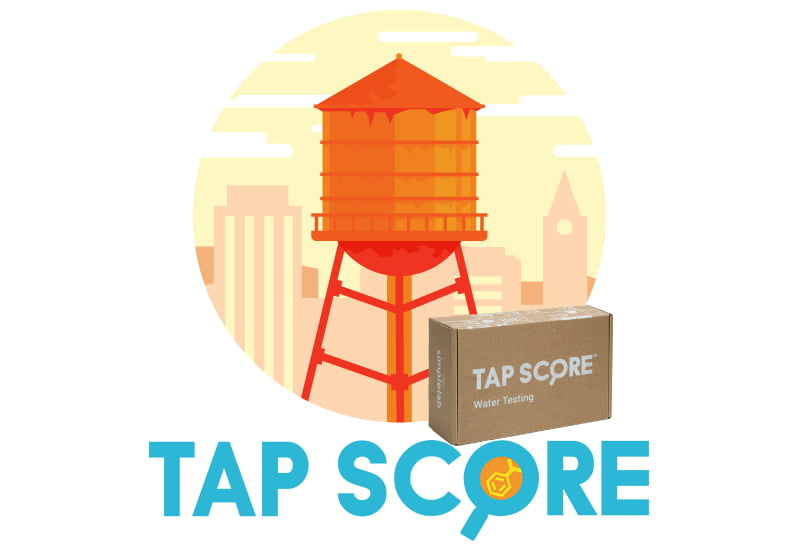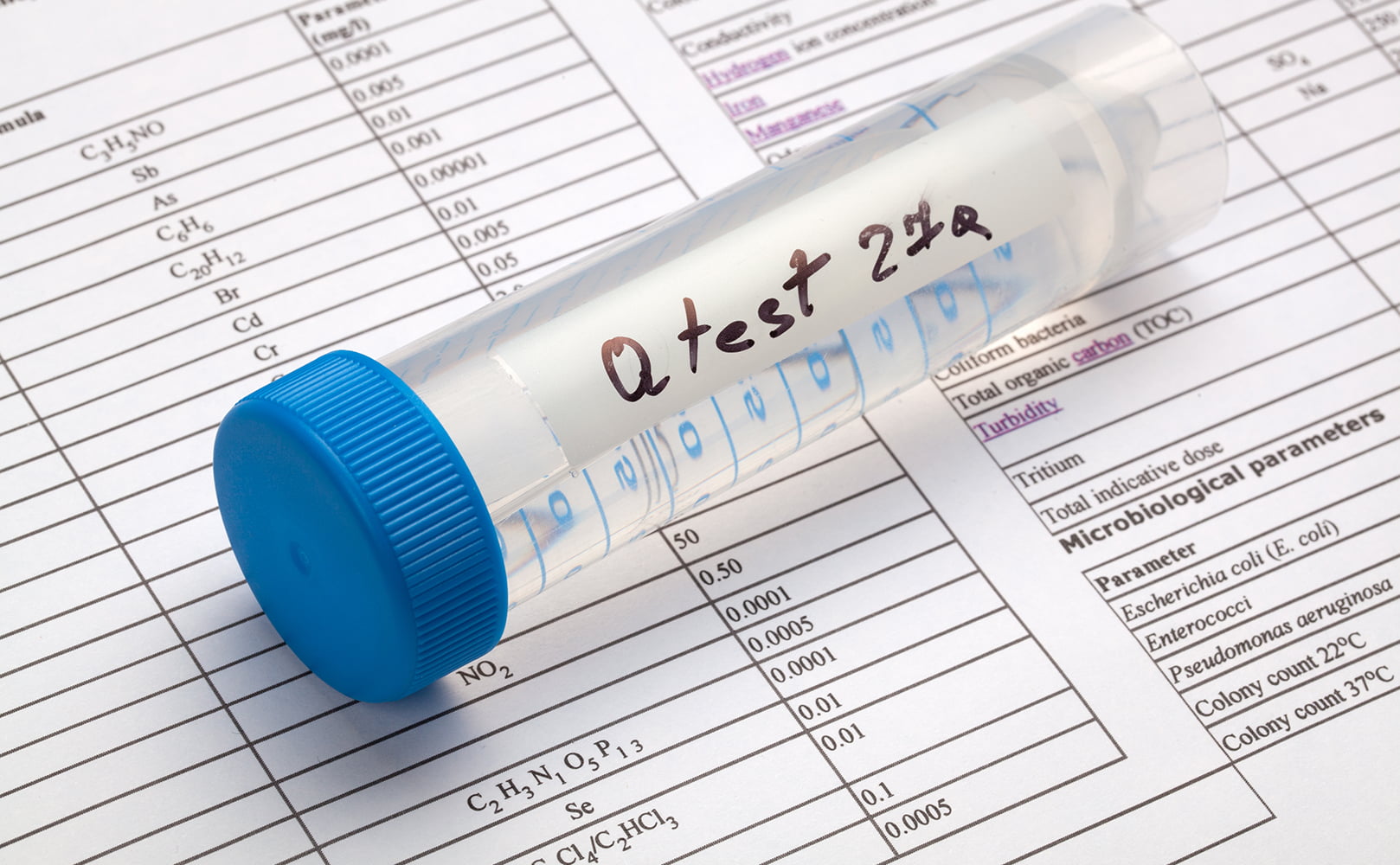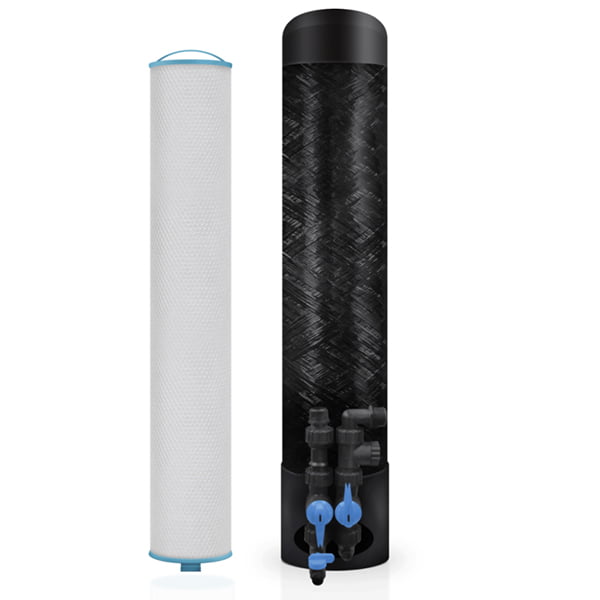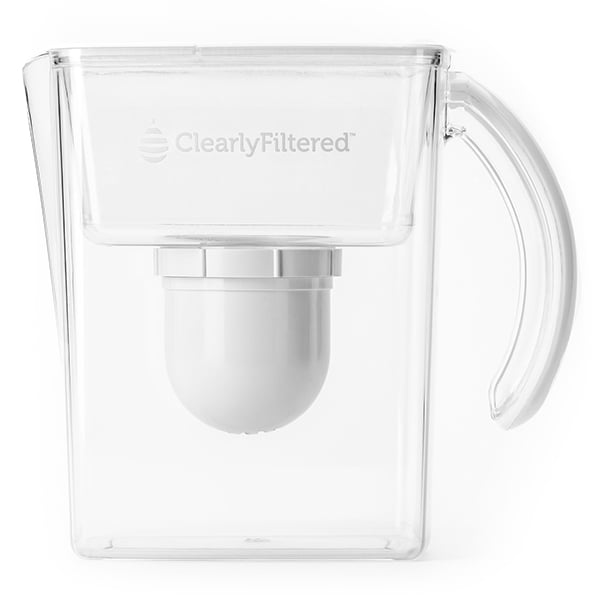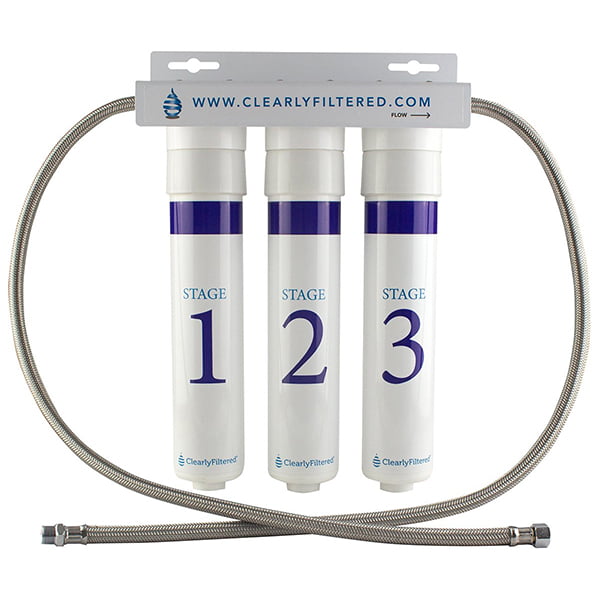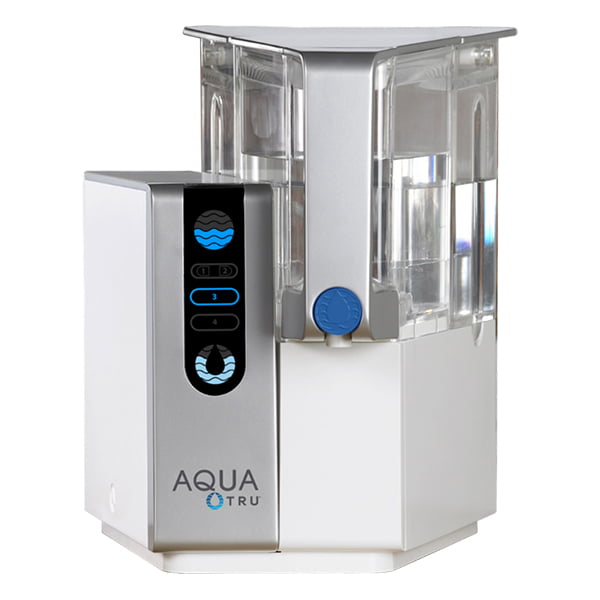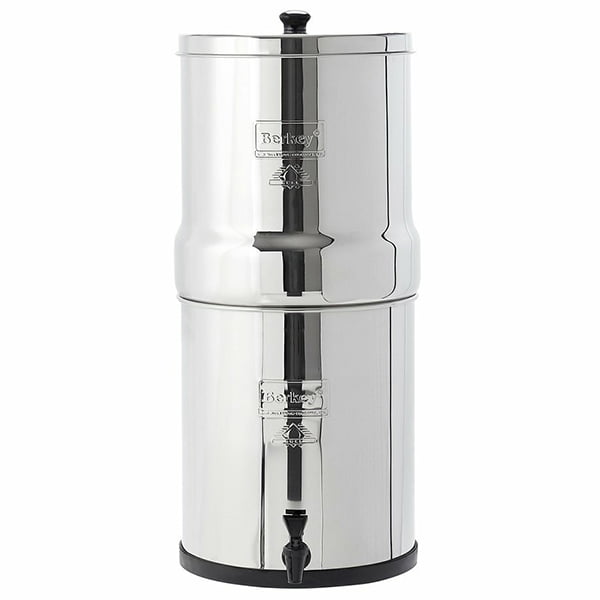How to Remove Lead from Water?!
Written by: Gene Fitzgerald // Last Updated: Sep 15, 2023
This page may contain affiliate links. If you buy a product or service through such a link we earn a commission at no extra cost to you. Learn more.
Lead contamination is extremely detrimental to our health, more so for young kids and infants. The Flint Crisis brought lead water contamination into the spotlight. Eventually, everyone began to question the presence of lead in their water.
If you are worried that your water might be exposed to lead, too, it’s time to fix the issue. After lead-based paint, the common probable cause of lead exposure is attributed to corroding lead pipes.
According to the Centers for Disease Control and Prevention (CDC), reverse osmosis and distillation are the two of the most effective ways to remove lead from your water.
Stay with us as we go through how to test your water for the presence of lead and the most effective ways to remove it.
Key Takeaways
These are the most effective ways to remove lead from water:
- Using a reverse osmosis system
- Using a carbon-based water filter
- Using water distillation
- Using a KDF water filter (soluble lead only)
- Tip: Check products for NSF certifications for lead reduction.
What Is Lead?
Lead is a natural element that makes up 0.0013% of the Earth’s crust.
Unfortunately, this heavy metal is now found throughout the environment – in air, soil, and water due to human intervention. Most of the lead pollution was caused by mining and the extraction of fossil fuels.
Moreover, lead and lead compounds are frequently used to make a lot of products, including paint, ceramics, pipes, batteries, solder, and gasoline. The usage of these products paves way for lead to enter our environment.
Therefore, many countries have regulated the use of these products to limit lead pollution.
Health Effects of Lead in Drinking Water
There is a long list of problems associated with lead inhalation and ingestion. A recent incident, the Flint Water Crisis, highlighted the graveness of the situation where nine kids passed away, and 80 became severely sick due to lead-contaminated drinking water.
Lead exposure, even in minute amounts, can cause a variety of symptoms, including fatigue, headaches, muscle, and joint pain.
Moreover, lead contamination increases the chances of cardiovascular diseases, high blood pressure, lower kidney function, and reproductive problems for both males and females.
Since lead can cross the placental barrier, pregnant women are at high risk from lead contamination. It may result in premature birth or worse, miscarriage.
For kids, lead poisoning can lead to long-term irreversible effects hampering physical development, brain damage, loss of appetite, loss of concentration, constipation, and vomiting.
What’s a Safe Level of Lead?
There is no safe level of lead acceptable in drinking water because if too much lead enters your blood, it can prove to be fatal. According to the Environmental Protection Agency (EPA), the maximum level of lead in public drinking water is set to zero. The actionable level is, however, 15 parts per billion (ppb).
This is because lead at even very low levels is dangerous to human health. On the other hand, bottled water must not contain more than 5 ppb of lead.
Since there is no way of reversing the damaging effects of lead in a kid’s developing brain and nervous system, pediatricians strictly advise taking precautions to limit exposure.
How Does Lead Enter Our Water Supplies?
Water does not naturally contain much or any lead. Nevertheless, here is how lead can get into your drinking water systems:
- The primary source of lead contamination is lead piping used in distribution channels or household plumbing.
When untreated water enters lead pipelines, it corrodes the pipes. The lead can then easily leach into your water. This is precisely why lead pipelines were banned in 1986.
Unfortunately, many old homes in low-income areas are still using lead pipes. Does that mean if your house uses copper pipes, you are safe from lead contamination? Sadly, no!
According to a survey by the American Water Works Association, 6.1 million water distribution lines containing lead are still running throughout the US. If you are on a distribution network that uses lead pipes, you are at the same risk of lead exposure.
- The second culprit is old lead solder found commonly in homes built before 1986.
It is important to remember that acidic water with a high pH level leads to faster corrosion of lead-containing pipes.
If you are using water from a private well, the chances of lead contamination are very meek. However, we can’t rule out the possibility. Sometimes, even an old lead pump inside the well can enable lead to enter your water supply.
Testing If and How Much Lead is in Your Water
Before you move on to how to remove lead, you must gain proper knowledge about the biochemistry of your water. Unless you know the exact concentration of lead and other contaminants in your water, you will be unable to find the perfect treatment solution.
So, how do you test your water supply? Lead is neither visible nor affects the taste and smell of your water. But don’t worry; we have all the answers.
Laboratory Test
The safest and most reliable way to test for lead contamination in water is sending a sample to a state-certified private laboratory. We recommend:
Get $10 Off! Use Code: BOS10
Since it is virtually impossible to test for all possible contaminants simultaneously, you must specify that you are worried about lead contamination.
Given the fact that lead’s presence in your water is erratic, it’s wise to do multiple tests over fifteen days to be sure. For example, your water sample today may show zero lead contamination, but a few days later, it might contain an alarming amount.
Cost: Approx $100
Result accuracy: Accurate
Local Water Report
You can search through the EPA’s database for your local water report, also called the consumer confidence report. Municipal water supplies are bound to test their water annually and publish a report highlighting the source of water and the level of contaminants present.
Unfortunately, this report is inconclusive since it does not take into account lead that could enter your water along distribution channels and through household plumbing.
Cost: Free
Result accuracy: Inconclusive
DIY Water Test
You can also purchase DIY water testing kits. Keep in mind that some kits can only test for one or two contaminants, while others can check for a wide variety of them, including lead. Most at-home kits will only give you a pass/fail result for lead contamination.
Just make sure that you get the correct kit to test for heavy metals, or your results will be misleading.
Cost: $10 to $50
Result accuracy: Varies by manufacturer
How to Remove Lead from Water?
Now we move on to the most critical question: how can you remove lead from water?
For a start, try to eliminate all sources of lead pollution in your house, i.e., lead pipes or solders. Of course, it’s an expensive solution and may not be possible due to numerous reasons. It is also possible that the distribution channels are to blame.
In that case, consider installing one of the following water filters.
Filtration Methods and Filters Most Suited for Removing Lead from Water
Water filtration is, undoubtedly, the safest, easiest, and most reliable way to remove lead from your drinking water. Here are the most commonly used water filters that can stop the infamous contaminant in its tracks before it makes its way into your body.
- Reverse osmosis systems: RO systems can remove over 99% of lead from your drinking water.
- Carbon-based water filters: Activated carbon filters, whether GAC or block carbon, adsorb some lead, along with chemicals and other stuff. However, not every carbon filter can remove lead altogether.
- Distillation: Water distillation relies on evaporation to purify almost all contaminants from your water, including lead.
- KDF + Ion exchange: KDF media and cation exchange resin utilize the process of ion exchange to remove lead very effectively.
#1 Whole House Lead Water Filter: PIONEER
- Only Whole House Water Filter NSF 53-Certified for Lead Removal
- Enough Water for Up to 3 Bathrooms (Use 2 Systems in Parallel If You Need More)
- Removes 99.62% Particulate + Soluble Lead
- One Filter Cartridges Lasts 100,000 Gallons of Water
- 6-Month Satisfaction Guarantee and Lifetime Warranty (Limited)
- → Detailed PIONEER Review
#1 Lead Filter Pitcher: Clearly Filtered
- Removes 365+ Contaminants
- 99.3% Lead Reduction
- NSF 42, 53, 401 & 473
- Built in the USA
- 30-Day Satisfaction Guarantee + Lifetime Warranty (Limited)
- → Read Full Review
#1 Under Sink Lead Water Filter: Clearly Filtered 3-Stage
- Removes 230+ Contaminants
- 98.9% Lead Reduction
- NSF 42, 53, 401
- Built in the USA
- 30-Day Satisfaction Guarantee + Lifetime Warranty (Limited)
- → Read Full Review
#1 Gravity Water Filter: Big Berkey
- Certified to Remove Dozens of Contaminants
- 99.9% Lead Reduction
- NSF 42, 53
- Installation-Free
- 2 Years to Lifetime Warranty
- → Read Full Review
NSF Certifications
NSF-testing and certification provide an absolute guarantee that a water filtration system works as claimed. For standard lead filters, look for an NSF 53 certification. If you are interested in an RO system, ensure it is NSF 58 certified.
That said, only because a water filter is certified against NSF 53 or 58 does not entail that it indeed removes lead. Both standards cover a wide range of contaminants which is why you need to check the lab reports, usually included in the product manual, for lead reduction specifically.
Moreover, compare the level of lead each system can remove against one another, because some lead filters are way more effective than others.
Filter Replacements
A water filter is only as effective as the cartridge it contains. If the cartridge is chock full of contaminants, dirt, and gunk, what can it remove? Virtually nothing.
Proper maintenance of lead filtration systems is essential to keep them in the best working condition.
If using whole house water filters, a drop in water pressure is a sign your filters need replacement.
More Ways to Reduce Lead in Your Water
Here are two clever ways to prevent infamous lead from entering your body.
- The longer the water stays in contact with lead piping, the higher is the chance of lead contamination. So, every time you open the tap, allow the water to run for a few minutes before consuming it. We understand this solution may not be practical in the long run, but it works as a short-term fix.
- Don’t use hot water from the tap. You see, hot water allows faster lead absorption from pipes compared to cold water. Even if you need hot water, make it a habit to heat the cold water on a stove.
Can You Boil Lead Out of Water?
Boiling water cannot remove lead from your water supply. Quite the contrary, boiling increases the level of lead contamination since some water evaporates.
If you have any questions about how to remove lead from water please don’t hesitate to leave a comment below!
Information provided on BOS is for educational purposes only. The products and services we review may not be right for your individual circumstances.
We adhere to strict editorial guidelines. Rest assured, the opinions expressed have not been provided, reviewed, or otherwise endorsed by our partners – they are unbiased, independent, and the author’s alone. Our licensed experts fact-check all content for accuracy. It is accurate as of the date posted and to the best of our knowledge.


